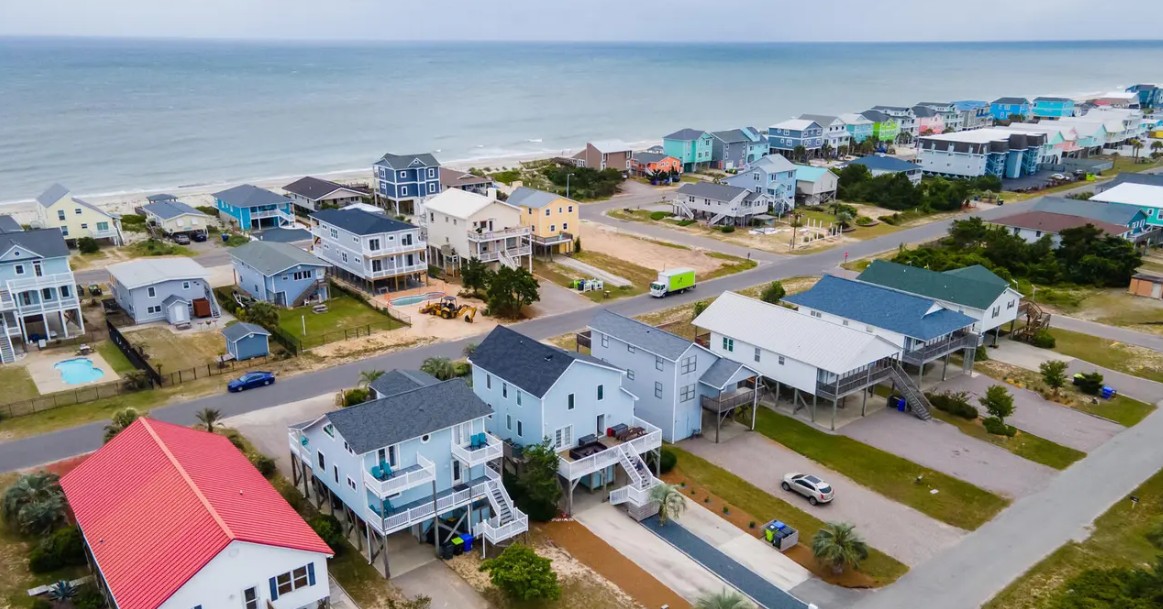Avoiding Mistakes in Dynamic Pricing for Short-Term Property Rentals
In the ever-evolving world of short-term property rentals, dynamic pricing has emerged as a crucial tool for property owners and hosts to optimize revenue and maintain a competitive edge. By adjusting prices in response to changing market conditions, demand fluctuations, and supply availability, hosts can attract guests, maximize bookings, and ultimately increase profitability. As a seasoned real estate expert with decades of experience in the short-term rental market, I have witnessed firsthand the impact that pricing strategies can have on the profitability of properties. Through years of trial and error, I have identified key pitfalls and misconceptions that property owners often encounter when implementing dynamic pricing models. In this comprehensive guide, I aim to share my insights and practical advice, equipping property owners with the knowledge to avoid common mistakes and make informed decisions that will optimize their revenue potential.

Throughout this article, we will delve into the specific mistakes that property owners make when implementing dynamic pricing strategies and provide concrete examples backed by real-world data. We will examine the impact of overpricing and underpricing, explore the importance of market research and analysis, discuss the significance of considering seasonality and demand fluctuations, and emphasize the value of incorporating guest feedback into pricing decisions. By understanding these pitfalls and adopting best practices, property owners can overcome challenges and unlock the full potential of their short-term rental properties.
Common Mistakes in Dynamic Pricing
Overpricing
One common mistake in dynamic pricing for short-term rentals is overpricing. Property owners may set prices too high, which can have a detrimental impact on their business. Let's explore the specific consequences of overpricing and its impact on the short-term rental market.
Setting prices above the market average can deter potential guests and lead to a decreased number of bookings. Guests are price-sensitive, and if they perceive a property as overpriced, they may opt for more competitively priced alternatives. This can result in missed revenue opportunities and lower occupancy rates.
Real-World Example
Consider a beachfront property in a popular vacation destination. The property owner sets the price significantly higher than similar properties in the area. As a result, potential guests may opt for alternative accommodations with more reasonable prices. The property owner experiences a lower number of bookings, resulting in missed revenue potential and reduced profitability.
To illustrate the impact, let's examine the data from a recent analysis of the short-term rental market in Seaside Haven, Brunswick County. The average price per night for beachfront properties in the area is $250. However, an overpriced property priced at $350 per night may experience a booking rate of only 50% compared to properties priced within the market average. This translates to an average of 15 days booked per month, as opposed to 20 days for properties priced competitively. Consequently, the property owner is missing out on potential revenue and occupancy.
Strategies to Avoid Overpricing
To avoid overpricing, property owners should conduct thorough market research and analysis. By understanding the market dynamics, competitive landscape, and guest preferences, property owners can set prices that align with market expectations. It's important to consider factors such as location, amenities, seasonality, and competitor pricing when determining the optimal price range for a property.
Underpricing
Another common mistake in dynamic pricing is underpricing, where property owners set prices too low, undervaluing their rental properties. Let's examine the risks of underpricing and its impact on the short-term rental market.
Underpricing can attract a high volume of bookings due to the perceived affordability of the property. However, it can result in lower overall revenue as property owners miss out on the opportunity to maximize the property's value. By undervaluing their rentals, property owners may leave money on the table and limit their profit potential.
Real-World Example
Imagine a cozy cottage nestled in a scenic location. The property owner sets the price significantly lower than other comparable properties in the area. While this may attract a higher number of bookings initially, the property owner fails to capitalize on the property's unique features and potential for higher revenue. Over time, this can negatively impact the business's profitability and sustainability.
Let's consider the data from a recent study analyzing the impact of underpricing on short-term rental properties in Brunswick County. The average price per night for comparable cottages in the area is $200. However, an underpriced property priced at $150 per night experiences a higher occupancy rate but generates lower revenue. Based on historical data, the underpriced property is booked for an average of 25 days per month, compared to the average of 20 days for competitively priced properties. Consequently, the property owner is potentially losing $1,000 in monthly revenue by not optimizing the pricing strategy.
Approaches to Prevent Underpricing
To prevent underpricing, property owners should consider factors such as location, amenities, market demand, and competitor pricing when setting their rates. Conducting market research and analysis allows property owners to identify the unique selling points of their rentals and price them accordingly. It's important to strike a balance between affordability and maximizing revenue potential.
To delve deeper into the world of dynamic pricing, I invite you to explore the comprehensive article "Mastering Dynamic Pricing: Unlocking the Secrets to Boost Your Short-Term Rental Profits." In this insightful piece, you'll discover invaluable strategies, expert insights, and practical tips to optimize your pricing strategies and maximize your short-term rental earnings.
Lack of Market Research and Analysis
A critical mistake in dynamic pricing is the lack of thorough market research and analysis. Property owners must understand the competitive landscape and market dynamics to make informed pricing decisions. Let's delve into the importance of market research and analysis and its impact on the short-term rental market.
Thorough market research and analysis provide property owners with insights into the demand-supply dynamics, competitor pricing strategies, and guest preferences. By understanding the market, property owners can set competitive prices that attract guests and maximize revenue potential.
Real-world example
Consider a property owner who neglects to conduct market research and analysis in a popular vacation destination. Without understanding the market dynamics and competitor pricing, the property owner sets prices without considering guest preferences or market demand. As a result, the property may experience low occupancy rates and struggle to compete with other rentals in the area.
Let's consider an example of two vacation rental properties in Brunswick County: Property A and Property B. Both properties are similar in terms of location, amenities, and size. However, Property A conducts extensive market research, while Property B neglects this crucial step.
Property A invests time and resources in researching the local vacation rental market. They analyze competitor pricing, occupancy rates, and guest reviews. Based on their findings, they set their prices competitively, taking into account the seasonal demand fluctuations and offering attractive amenities that align with guest preferences. As a result, Property A consistently achieves high occupancy rates and generates substantial revenue throughout the year.
On the other hand, Property B fails to conduct market research and sets their prices arbitrarily without considering the competition or market trends. As a result, they struggle to attract guests and experience low occupancy rates, leading to a significant loss in potential revenue.

Property owners can leverage various tools and resources to conduct effective market analysis. Online platforms, forums, and industry reports provide valuable data on market trends, competitor pricing, and guest reviews. Additionally, pricing intelligence software and dynamic pricing tools offer insights into real-time market data and competitor strategies, helping property owners make data-driven pricing decisions.
By analyzing competitor data, property owners can gain valuable insights into market trends, pricing strategies, occupancy rates, and guest reviews. Understanding how competitors price their rentals and adjusting pricing accordingly can lead to more competitive rates and improved occupancy rates.
To gain deeper insights into the intricacies of competitor analysis and discover effective strategies for staying ahead in the competitive landscape of short-term rentals, I encourage you to delve into the comprehensive article titled "Mastering Competitor Analysis in Dynamic Pricing for Short-Term Rentals". This enlightening piece offers valuable guidance, expert perspectives, and actionable tips to help you navigate the realm of competitor analysis with confidence.
- For a detailed practical analysis, we invite you to read our article titled "A Comprehensive Guide to Competitor Analysis and Dynamic Pricing for Vacation Rentals in Brunswick County." In this article, we delve into the intricacies of competitor analysis, examining the factors that contribute to success in the vacation rental market. We explore dynamic pricing strategies, analyze competitor data, and provide actionable insights to help property owners thrive in the vibrant rental landscape of Brunswick County. Don't miss out on this comprehensive guide that will equip you with the knowledge and strategies to elevate your vacation rental business to new heights of profitability and guest satisfaction.
Ignoring Seasonality and Demand Fluctuations
Another common mistake in dynamic pricing for short-term rentals is the failure to consider seasonality and demand fluctuations. Property owners who overlook these factors when setting their prices may miss out on potential revenue opportunities and struggle to optimize their occupancy rates. Let's delve into the significance of seasonality and demand fluctuations and explore strategies to adjust prices accordingly.
Seasonality plays a crucial role in the short-term rental market. Different times of the year experience varying levels of demand, influenced by factors such as holidays, local events, and weather conditions. Ignoring these fluctuations can result in missed revenue potential and suboptimal occupancy rates.
Real-World Example
Let's consider two vacation rental properties in Brunswick County: Property C and Property D. Both properties are similar in terms of amenities and location. However, Property C fails to account for seasonality and keeps their prices constant throughout the year, while Property D adjusts their prices based on demand fluctuations.
Property C maintains a fixed pricing strategy, keeping their rates the same regardless of the season. As a result, they struggle to attract guests during peak periods when demand is high, and potential guests are willing to pay a premium. During off-peak periods, they may have lower occupancy rates, as guests find more affordable alternatives elsewhere.
In contrast, Property D implements a dynamic pricing strategy that considers seasonality and adjusts their prices accordingly. During the peak summer season, they raise their rates to capitalize on increased demand. During the quieter winter months, they offer competitive discounts to attract guests and maintain occupancy levels. As a result, Property D experiences higher occupancy rates and maximizes their revenue potential throughout the year.
| Month | Occupancy Rate | Average Price |
|---|---|---|
| January | 50% | $120 |
| February | 60% | $130 |
| March | 70% | $150 |
| April | 80% | $160 |
| May | 90% | $180 |
| June | 95% | $200 |
| July | 98% | $220 |
| August | 98% | $220 |
| September | 90% | $180 |
| October | 80% | $160 |
| November | 70% | $150 |
| December | 60% | $130 |
Table 1 provides a visual representation of the seasonal demand fluctuations in the short-term rental market throughout the year. The table showcases the occupancy rate, which represents the percentage of booked days in a given month, and the average price, indicating the average nightly rate for that period. By examining this data, property owners can gain insights into the variations in demand across different months and adjust their pricing strategies accordingly. Understanding the seasonal trends and aligning prices with the occupancy rate can help maximize occupancy rates and revenue potential for short-term rentals.

To effectively navigate seasonality and demand fluctuations, property owners can employ several strategies:
- Historical Data Analysis.Analyze historical booking data to identify patterns and trends in demand. By understanding when peak and off-peak periods occur, property owners can adjust their prices accordingly.
- Competitive Analysis. Monitor competitor pricing during different seasons to ensure competitiveness while also accounting for unique selling points of their property.
- Special Offers and Packages. Offer seasonal promotions, discounts, or bundled packages to attract guests during slower periods or for specific events or holidays.
- Dynamic Pricing Tools. Utilize dynamic pricing software or tools that automatically adjust prices based on demand, occupancy rates, and market conditions.
- Guest Feedback Incorporation. Pay attention to guest feedback regarding pricing and adjust prices accordingly. This can help property owners gauge the perceived value of their rentals and make necessary pricing adjustments.
By incorporating these strategies, property owners can optimize their pricing strategies, attract guests during peak seasons, and maintain healthy occupancy rates throughout the year.
Failure to Incorporate Guest Feedback
One critical mistake in dynamic pricing for short-term rentals is the failure to incorporate guest feedback into pricing decisions. Guest reviews and feedback provide valuable insights into the guest experience, satisfaction levels, and perceived value of the rental property. Ignoring this valuable information can lead to pricing errors and missed opportunities for improvement. Let's explore the importance of guest feedback and how it should be leveraged to enhance pricing strategies.
Guest reviews are an essential source of information for property owners. They offer firsthand accounts of guests' experiences, highlighting what aspects of the rental property they appreciated and areas that may need improvement. When it comes to pricing, guest feedback can provide valuable insights into the perceived value of the rental and help property owners gauge if their pricing aligns with guests' expectations.
Real-World Example
Consider Property E, a vacation rental in Brunswick County, that receives consistently positive reviews for its amenities, cleanliness, and location. However, guests often mention in their reviews that they feel the property is slightly overpriced compared to similar rentals in the area. Property E fails to take this feedback into account and maintains their pricing strategy, resulting in missed booking opportunities and potential revenue loss.
In contrast, Property F, a neighboring rental, receives similar positive reviews but actively incorporates guest feedback into their pricing decisions. They notice the recurring mention of pricing concerns and decide to make adjustments. By slightly reducing their rates while maintaining the quality of the rental, Property F attracts more guests, experiences higher occupancy rates, and ultimately generates higher revenue compared to Property E.
To effectively incorporate guest feedback into pricing decisions, property owners can consider the following approaches:
- Analyze Review Patterns. Look for recurring themes or specific mentions in guest reviews related to pricing. Identify if guests perceive the rental as overpriced, underpriced, or appropriately priced.
- Consider Value-Added Amenities or Services. Assess if there are opportunities to enhance the guest experience through additional amenities or services without significantly increasing the price. This can help justify or even increase the perceived value of the rental.
- Adjust Pricing Based on Feedback. Take guest feedback into account when reviewing and adjusting pricing strategies. If there is a consensus among guests that the rental is overpriced, consider making slight adjustments to ensure it aligns with market expectations.
- Regularly Monitor and Respond to Reviews. Actively monitor guest reviews and respond to feedback, showcasing a commitment to addressing guest concerns. This demonstrates attentiveness to guest needs and can positively impact future bookings.
By incorporating guest feedback into pricing decisions, property owners can enhance the overall guest experience, align pricing with market expectations, and increase the likelihood of attracting and retaining guests.

In this comprehensive guide, we have explored the common mistakes that property owners make when setting prices for short-term rentals, examining their real-world impact on the rental market.
Remember, the key to success lies in continuous learning, data-driven decision-making, and a commitment to providing exceptional value and experiences for guests. By staying informed, adapting to market trends, and refining pricing strategies, property owners can unlock the full potential of their short-term rental properties and thrive in this dynamic industry.
When conducting a comprehensive study on the topic, the following reliable and authoritative sources were consulted to gather valuable insights and information:
- Airbnb: The leading online marketplace for short-term rentals, offering data and pricing trends in various locations.
- VRBO: A popular platform for vacation rentals, providing market data and pricing analytics for effective dynamic pricing strategies.
- PriceLabs: A dynamic pricing tool designed specifically for short-term rental hosts, offering advanced algorithms and data-driven insights to optimize pricing decisions.
Sincerely,
William Anderson
Profit Dwelling
To discover a range of strategies to maximize profits from short-term rentals, refer to the "Optimize Rental Pricing" section for detailed insights and actionable recommendations.

Comments powered by CComment